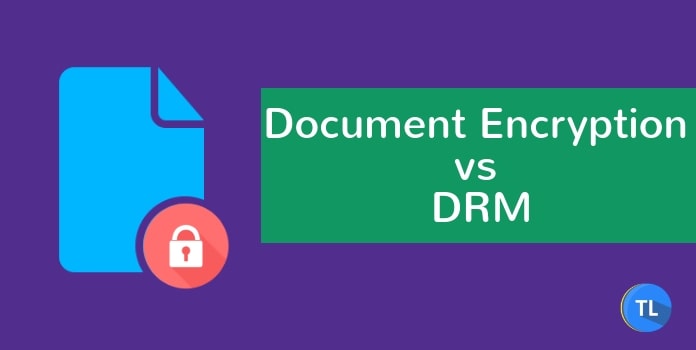When you’ve made up your mind to start securing your documents, the next step is to choose a secure option that closes all document security loopholes.
So, you must be wondering what security measures you can implement, without a significant overhaul of your overall IT system. Opting for document encryption is likely to spring to mind.
But, is encryption really an end-to-end secure option?
Why Document Encryption May Not the Most Secure Option?
The concept of encryption has been around for centuries, from the Roman scytales to complex codes and cyphers during the World Wars. In its modern form, encryption secures files and folders as it’s basically a method to protect data and make it viewable for only the intended and authorized personnel.
But, did you know that the very thing that protects the document (namely the access key or password) can be its downfall? Think about it. What exactly is the layer of protection that encryption provides? Not much. Essentially, anyone with the password can access the document and make modifications to it.
The only way you can prevent this is probably to lock a license key to a particular system. Plus, you’ll have to tinker a whole lot and brainstorm more secure ways of generating and delivering a password to ensure a higher level of security.
The only thing that works in favour of encryption is that it’s a no-hassle method of protecting your documents.
But, if you want to protect your documents from all vulnerabilities and stop sharing, and only want to display the information you want to be accessed while hiding all other controls that make modifications and misuse easy. It may be worth looking at using Digital Rights Management (DRM).
Seal All Security Loopholes with DRM
DRM was initially used largely in the media industry to prevent unauthorized downloads, limit access, and stop unauthorized streaming of revenue-generating digital content (for example, music or films).
Since then, DRM has made a long journey into the corporate sphere and now forms a huge part of how enterprises choose to secure their proprietary information.
But, document DRM is a little more complicated than its use in the multimedia industry. For multimedia content, there are fewer chances of credit loss to the creator than in unprotected documents. However, unauthorized sharing of both multimedia files and documents can result in revenue loss.
Basically, protecting documents with DRM means adding a long list of controls to make sure the documents are secure. These controls include:
- Time-based sharing (access expiration after a set period of time)
- Manual access revoke
- Digital trails (to keep track of changes and access)
- Prevent copying, printing and screen grabbing
- Compatibility on different platforms (including viewers)
- Location-specific access (specific system, geographic location or IP address)
- Dynamic watermarks
Document DRM also needs the file access processes of a specific operating system and should be able to work online and offline.
Compatibility is another important consideration with document DRM since viewing and rendering the document should be seamless for both the creator and the recipient, while also retaining the custom security controls applied to the document.
A great way to ensure portable document security is to lock a DRM document to a flash drive which has a compatible viewer installed. This is great for offline access and the document remains protected no matter where it is.
Final Thoughts
Each system has some way of monitoring document access and network security adds to that. However, you need to think ahead and apply document security for situations where documents have already left your secure network and how to control access and use so that they always remain under your control.

